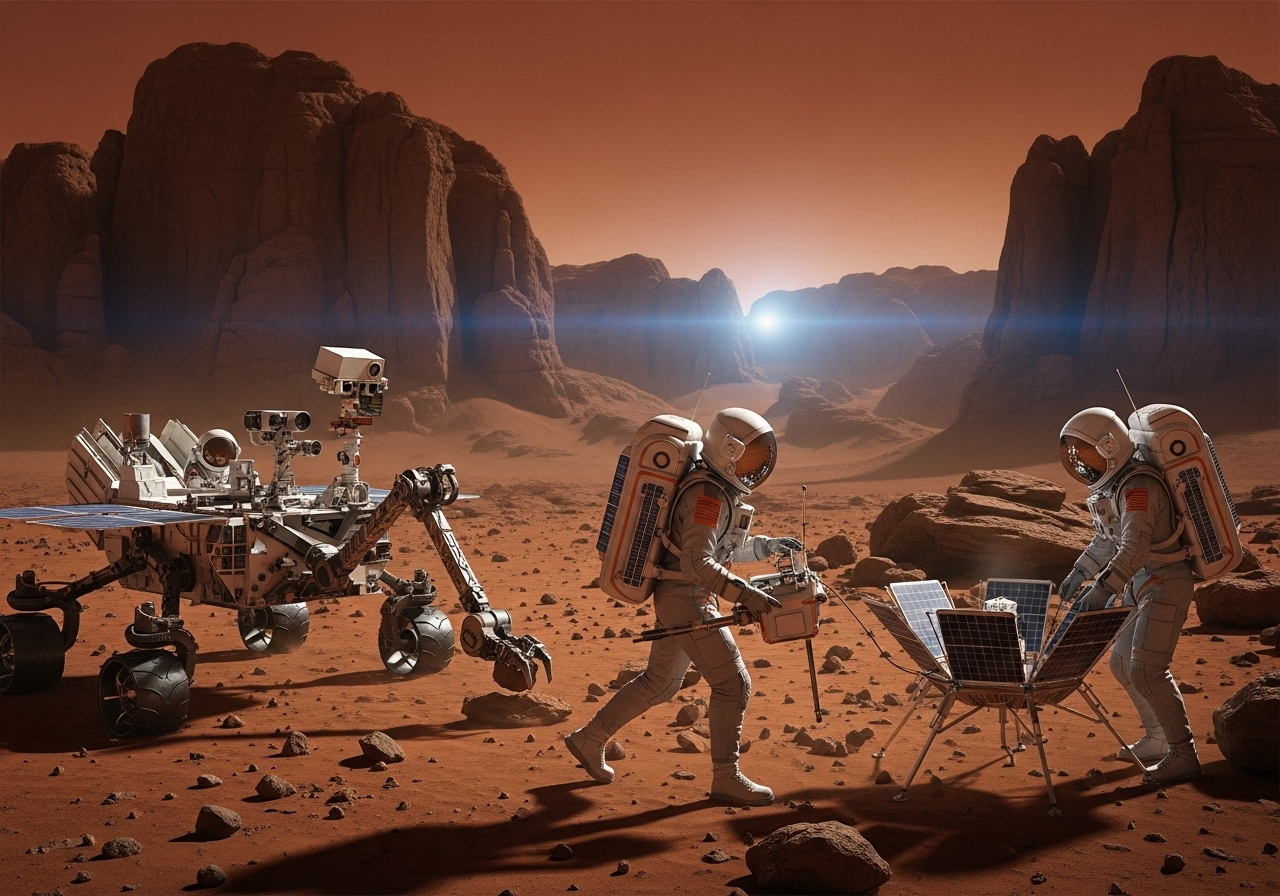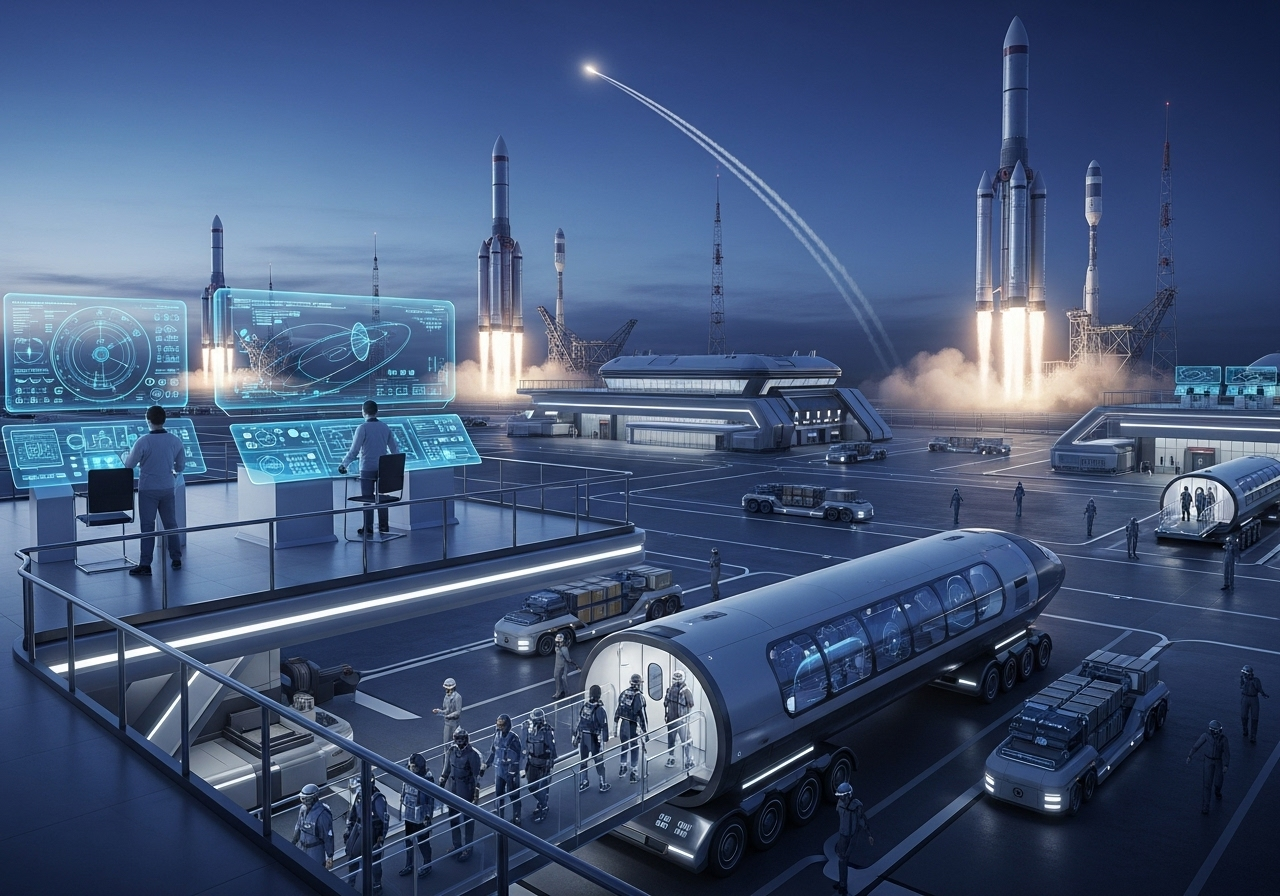Space Exploration in 2026: Tech That's Taking Us to the Stars
Sienna Brown
2025-10-18
6 min read

As we stand on the threshold of 2026, humanity's reach into the cosmos has never been more ambitious or technologically sophisticated. This year promises to be a watershed moment in space exploration, with groundbreaking technologies and missions that could fundamentally reshape our understanding of the universe and our place within it. From revolutionary propulsion systems to artificial intelligence-powered spacecraft, the tools taking us to the stars are evolving at an unprecedented pace.
Next-Generation Propulsion Systems
The backbone of modern space exploration lies in propulsion technology, and 2026 is witnessing remarkable advances in this field. NASA's Artemis program continues to push the boundaries with its Space Launch System, which represents the most powerful rocket ever successfully flown. This behemoth generates 8.8 million pounds of thrust, enabling missions that were previously impossible with conventional chemical rockets. Perhaps even more exciting is the continued development of ion drive technology and solar sails. These systems, while slower to accelerate, offer incredible efficiency for long-duration missions. The European Space Agency's upcoming BepiColombo mission to Mercury relies heavily on ion propulsion, demonstrating how these technologies are transitioning from experimental concepts to mission-critical systems. Nuclear thermal propulsion is also making significant strides in 2026. NASA's collaboration with the Department of Energy on the Demonstration Rocket for Agile Cislunar Operations program represents a major step toward reducing travel time to Mars from nine months to as little as three months. This technology could revolutionize deep space exploration by making interplanetary travel more feasible and less resource-intensive.
Artificial Intelligence and Autonomous Systems
The integration of artificial intelligence into space exploration has reached new heights in 2026. Modern spacecraft are no longer passive instruments requiring constant ground control but have evolved into intelligent systems capable of making critical decisions in real-time. This capability is particularly crucial for missions to distant planets where communication delays can span minutes or even hours. Mars rovers exemplify this technological evolution. The latest generation of robotic explorers uses machine learning algorithms to analyze terrain, identify scientific targets, and navigate complex landscapes with minimal human intervention. These systems can process vast amounts of data locally, transmitting only the most relevant findings back to Earth, thereby optimizing the limited bandwidth available for deep space communication. Autonomous rendezvous and docking systems have also matured significantly. SpaceX's Dragon capsules and other commercial spacecraft now routinely perform complex orbital maneuvers without human pilot intervention, relying instead on sophisticated computer vision and AI systems that can adapt to unexpected conditions in space.

International Collaboration and Commercial Partnerships
The landscape of space exploration in 2026 is characterized by unprecedented international cooperation and commercial involvement. The Artemis Accords have expanded to include dozens of nations, creating a framework for peaceful lunar exploration and resource utilization. This collaborative approach is enabling missions that no single nation could accomplish alone. The Lunar Gateway project stands as a testament to this international cooperation. This orbiting lunar outpost, developed jointly by NASA, ESA, the Canadian Space Agency, and the Japan Aerospace Exploration Agency, serves as a staging point for lunar surface missions and deep space exploration. The Gateway demonstrates how pooling resources and expertise can accelerate technological development and reduce costs. Commercial space companies have become integral partners in government-led exploration efforts. Companies like SpaceX, Blue Origin, and numerous smaller firms are not just contractors but innovation drivers, developing technologies that often surpass traditional aerospace capabilities. The competition among commercial providers has accelerated development timelines and reduced launch costs dramatically.
Advanced Materials and Manufacturing
Space exploration in 2026 benefits from revolutionary advances in materials science and manufacturing techniques. Three-dimensional printing technology has evolved to the point where entire spacecraft components can be manufactured in space using locally available materials. This capability is particularly valuable for long-duration missions where carrying spare parts is impractical. New composite materials offer unprecedented strength-to-weight ratios while withstanding the extreme conditions of space. These materials enable the construction of larger, more capable spacecraft without proportional increases in launch mass. Smart materials that can change properties in response to environmental conditions are being integrated into spacecraft systems, providing self-healing capabilities and adaptive functionality. Additive manufacturing techniques are also revolutionizing how we think about space construction. The ability to print habitat structures using lunar or Martian soil could make permanent human settlements economically viable, transforming space exploration from short-term visits to long-term colonization efforts.
Breakthrough Scientific Instruments
The scientific instruments aboard modern spacecraft represent quantum leaps in capability compared to previous generations. Advanced spectrometers can now identify molecular compositions from unprecedented distances, while improved imaging systems provide resolution that rivals ground-based telescopes despite operating in the harsh environment of space. Quantum sensors are beginning to find applications in space exploration, offering sensitivity levels that enable detection of gravitational waves, dark matter interactions, and other phenomena that were previously beyond our reach. These instruments are opening new avenues of scientific inquiry and potentially revolutionary discoveries. Miniaturization has also played a crucial role in expanding scientific capabilities. CubeSats and other small spacecraft can now carry instruments that were once limited to large, expensive missions. This democratization of space science is enabling more frequent missions and allowing smaller organizations to participate in space exploration.
Looking Toward the Future
The technologies emerging in 2026 are laying the groundwork for even more ambitious future missions. Concepts like fusion rockets, which could reduce travel time to the outer planets to mere months, are moving from theoretical studies to preliminary engineering development. Breakthrough Starshot and similar initiatives are exploring technologies that could eventually enable interstellar travel within human lifetimes. The convergence of artificial intelligence, advanced materials, international cooperation, and commercial innovation is creating a perfect storm of progress in space exploration. As we look to the stars in 2026, we do so with tools and capabilities that previous generations of space explorers could only dream of. The technologies being deployed this year are not just taking us further into space but are fundamentally changing what it means to explore the cosmos. The journey to the stars is no longer a distant dream but an engineering challenge we are actively solving. With each technological breakthrough in 2026, humanity takes another step toward becoming a truly spacefaring civilization, equipped with the tools necessary to unlock the mysteries of the universe and secure our species' future among the stars.


